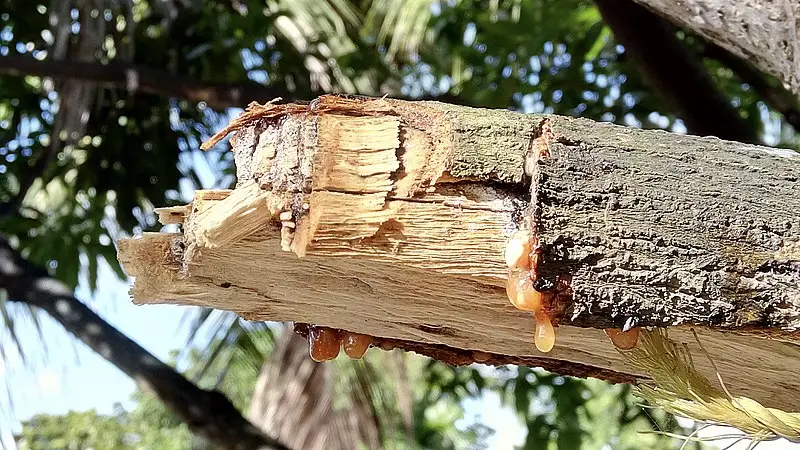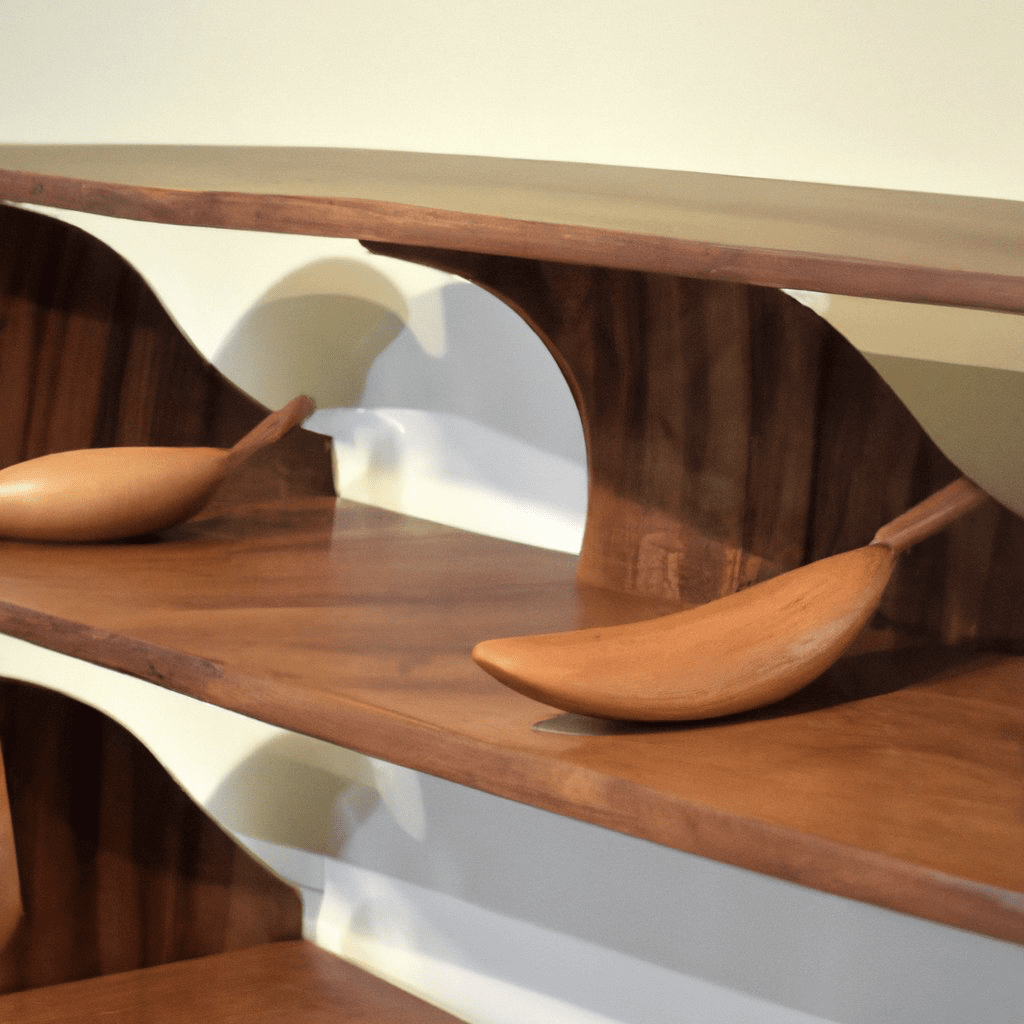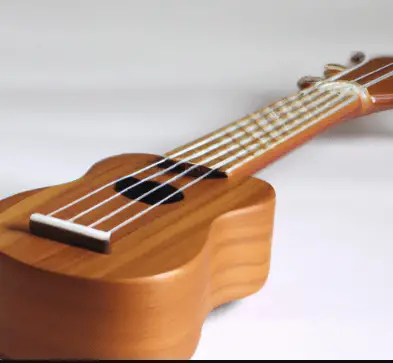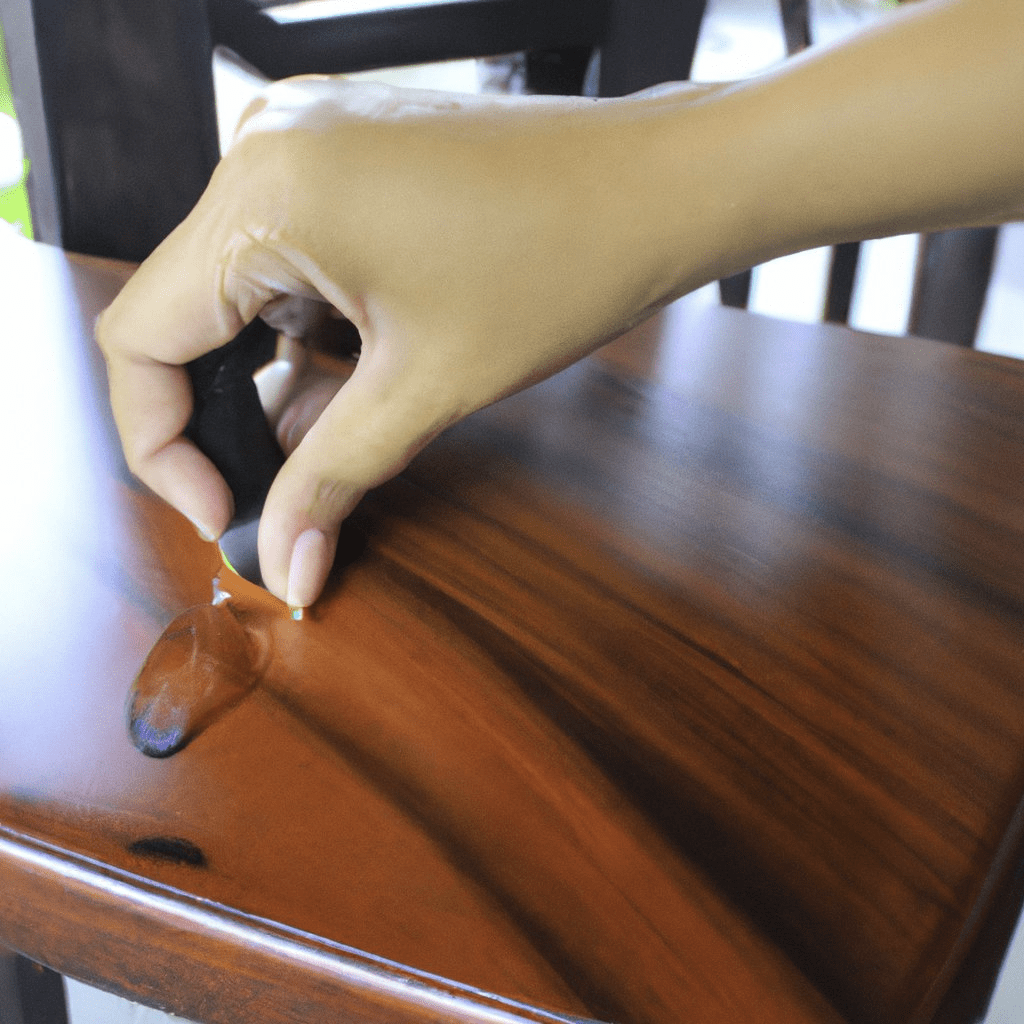Mangoes are one of the most delicious fleshy fruits in the world, but did you know that wood obtained from mango trees can also be used to make wood furniture, instruments, kitchen appliances, and flooring?
The main reason why mango wood is so popular with furniture manufacturers and woodworkers is that it is characterized by an appealing appearance, is durable, readily available, and it has a nice coarse texture.

Find out everything you need to know about mango wood in this article.
What is Mango Wood?
Mango wood is a type of wood that is typically sourced from the mango tree.
The mango tree also known as Mangifera Indica (MI) is an essential tropical fruit-bearing tree belonging to the family Anacardiaceae (cashew or sumac family), consisting of about 35 species.
The tree is very popular for its exquisite fruit and is found in many parts of the world, including China and Mexico. It produces ripe and juicy green or yellow-colored fleshy fruits that have a sweet taste. Mango wood has been a highly sought-after commodity in many parts of the world for centuries because of its attractive wood.
Mango is native to Southeast Asia, from where it has been distributed worldwide to become one of the most cultivated fruits in the world. It is now cultivated in many tropical and subtropical regions worldwide, with India remaining its largest producing country.
The Origins of Mango Wood
The mango wood has a very long history and its popularity has spread all over the globe, from Southeast Asia to Africa.
The mango tree is native to India and has been used by Indians for centuries (more than 4000 years) as a source of food and building material. The fruits were eaten fresh or preserved for later use and the wood was dried and used as fuel wood. The leaves, wood, and fruit were used to make holy fires for certain religious ceremonies in Hindu mythology.
The mango’s large seed made it difficult to be dispersed in new regions, so people carried and planted them around the world. Buddhism helped spread the fruit across Southeast Asia and Persian traders helped transport it across western Asia. In the 10th century, mango trees were planted in the Eastern part of Africa. When the Portuguese established trade routes for transporting goods, one of the things they transported was the mango tree.
This helped disperse the trees over Southeast Asia, Brazil, the Philippines, and later Africa.
Mango trees have been popular in countries around the world since then, but it wasn’t until the 1800s that they were able to be grown and consumed in the United States. Now, mango trees are grown in South America, Haiti, and Mexico. And, the top 10 mango-producing countries include India, China, Thailand, Mexico, Indonesia, Pakistan, Brazil, Egypt, Bangladesh, and Nigeria.
While mango trees grow in many regions of the world, Asia produces a majority of the world’s mango wood, accounting for nearly 75% of the world’s production.
Characteristics of Mango Wood
Mango wood is a remarkable and sustainable timber. It is prized for its beauty, variety of color and grain, durability, and suitability for almost any application. Find out more about what makes mango wood so special.
1. Moisture Resistance
If you are looking for wood that will not warp when exposed to water, mango wood may be the right choice.
Mango wood is a bit more resistant to moisture than other wood types, making it a good option for outdoor furniture. As a result of this, it is popular for building patio furniture.
It does not absorb moisture like some other types of wood might, so if you are looking for a durable option for outdoor spaces that won’t warp or bow when exposed to water, consider using mango wood for your project.
2. Color
Mango wood is one of the most beautiful and sought-after woods in the world. It has a unique color that makes it stand out from other woods.
Mango wood has a rich, golden brown color with yellow or black streaks. The color of the wood can vary depending on the specie of mango tree from which it was harvested.
If you’re looking for a unique look, mango wood is a great choice, but you’ll want to be aware of the fact that it can change colors over time. When exposed to sunlight, mango wood can fade as its color changes with exposure to direct sunlight. This characteristic can also be a major drawback if you choose to leave your furniture outside.
3. Texture
One of the best qualities of mango wood is its amazing texture and the interlocked pattern of its grain.
Mango tree wood is known for its medium to coarse texture, which means it still gets slightly rough even after sanding and smoothing operations. As a result of its good sheen and natural luster, products made from it can be polished well to a high shine as it stains and waxes well.
You can make all sorts of furniture with it and you don’t need special tools to work on it.
4. Strength
Mango wood is hardwood, so it’s strong and dense. It has a density of 750-780 kg/m3 at 12% humidity, so it is suitable for domestic flooring. It is a very popular hardwood choice for home construction and furniture because it is heavy and dense along with having a beautiful grain. Mango wood is known for its strength which is similar to hardwoods like cherry wood and oak wood.
Furthermore, the wood tends to be on the harder side, with a hardness rating of 1120 on the Janka hardness scale. The wood is known to be hard, but its hardness can vary depending on the species of the mango tree.
5. Sustainability
Mango wood is one of the most sustainable materials in the world. It grows incredibly quickly and matures in 10 to 15 years. It grows naturally in any area where there are warm or hot temperatures and tolerates dry conditions, so it can be grown anywhere that has the right conditions. The trees typically have a lifespan of about 100 years, with the average tree producing fruits till the late stage of their lifecycle.
They are sustainable as they are drought tolerant, can thrive in poor soil conditions, grow quickly, and are long-lived.
Mango trees are sustainable because they capture CO2 from the atmosphere. They store this carbon dioxide in their tree trunks. This process is called photosynthesis, and it helps to counteract global warming. The more mango trees there are in existence, the more CO2 they can absorb and remove from our planet.
Significant Properties of Mango Wood That Make it a Precious Resource
Mango wood is a natural resource that can be used for a variety of applications. It’s important to understand the significant properties of the wood to determine how it can be most effectively utilized.
1. Appearance
Mango wood has an appearance that is different from other hardwoods. It has a golden brown color with yellow or dark streaks, and these features make it highly sought after by woodworkers and homeowners. The sapwood between the bark and heartwood of the tree is paler and usually has yellowish-white color.

Mango wood is known for its appealing appearance. It has a very distinctive pattern on its surface which is created by the growth rings of the tree. The grain pattern is often quite intricate and beautiful, which makes it appealing as a material for furniture and other household items. Some woodworkers use this type of wood because of these specific features.
Mango wood is also used for decorative wall panels because of its attractive quality.
2. Cost
Wood is not only valuable because of its aesthetic properties, but also because it is relatively low in price. In comparison to other types of wood, mango timber is an inexpensive alternative.
One of the reasons mango wood is a low-priced resource is that it is sustainable. Mango wood comes from a superabundant tree, which means there will always be a supply available. In addition to that, mango trees require minimal processing.
In the last few years, there has been an increased interest in using mango wood for its low price, sustainability, and strength. This type of lumber is a great alternative to other types of expensive lumber that are not as sustainable or durable.
3. Durability
It has many uses in the construction industry because it is so strong and durable.
It can last a lifetime if properly maintained because the wood is much more resilient than other types of wood. Finished product from wood is usually strong and sturdy and it is advisable to treat or polish them to enhance water protection.
Mango wood has a dense grain, which makes it perfect for use as an alternative to metal in furniture or other applications where strength is needed.
Disadvantages of Mango Wood
Mango wood is a popular choice for furniture, but it does have its drawbacks. There are a variety of disadvantages to this type of wood that should be considered before using it for furniture. These include:
1. Rot Resistance
Mango wood is not as resistant to rot and insects as other types of wood like oak wood. It has poor resistance to mold, though this can be improved by sealing the wood with a sealant.
Under normal conditions, it will not rot, but if exposed to extreme moisture, it can cause unwanted rot to occur. Factors such as humidity, temperature, and exposure to water may influence your piece’s resistance.
Mango wood is susceptible to insect attack when left untreated, making it easy for termites to gain access.
2. Warping
Warping is an issue with furniture made from wet wood. This causes it to twist out of shape. Wood needs to be properly dried and allowed to cure before it is used for furniture.
The most common cause of warping is uneven moisture distribution in the wood, uneven finishing, and changes in humidity. It can happen to any type of wood, but it’s more common with mango wood.
Wood will absorb moisture from the environment around it, so if you store your furniture made from mango wood in an area with a lot of moisture (a humid bathroom or kitchen), they are more likely to warp over time.
3. Difficult To Work With
Although wood gotten from mango trees is beautiful and stains well, it’s a bit of a challenge to work with. It can be difficult to work with because it has an interlocked grain and a high tendency to tear out during machining. This is due to a large number of small pores present in the wood which are easily damaged or weakened by machining.
Also, mango wood has a fairly high silica content which makes it difficult to work with as it dulls blades and tools quickly.
Many beginners find it difficult to work with mango lumber because it is one of the hardest wood types to work on, so it is often avoided by them in favor of something easier.
4. Mild Toxicity
While mango wood is generally considered to be a safe wood, it does have mild toxicity. The sap of mango trees contains urushiol that can irritate the skin and cause itchy rashes and blisters. When some people come in contact with the sap, they get allergic reactions like urticaria, bullous cheilitis, or contact dermatitis.
Dry the wood properly to prevent sap from oozing out and avoid contact with mango wood if you experience any tingling or rash on your skin.
5. Dehydration
Wood is resistant to moisture, which makes it an ideal choice for outdoor furniture. But if you’re not careful, your mango wood furniture could become dehydrated. That means that the moisture inside the wood will start to evaporate, causing it to dry out and crack.
Over time, mango wood tends to become dehydrated, crack and split if you don’t take proper care of it. Conditioning mango wood by treating it with natural oils can help it last longer and prevent cracks from forming. Oils like walnut oil or peanut oil keep your furniture moist and fresh.
The Various Ways That Mango Wood Can Be Used
Mango wood is a beautiful, durable, and environmentally friendly alternative to mahogany and other premium wood types. It features a variety of natural colors that can be stained to create custom finishes.
Wood obtained from mango trees can be used in many different ways. Here are some of the most common uses:
1. Musical Instruments

The grain pattern of mango wood is very attractive, hence, it is desirable for the manufacture of musical instruments such as guitars, violins, mandolins, and ukuleles.
Mango wood is a popular choice for the soundboards of ukuleles and guitars because of its lightweight, it delivers warm tones, has a beautiful appearance, and produces mellow sound with great sustain.
2. Veneer
Wood veneer sheets can be made with a variety of materials. However, some materials like mango wood may be more difficult to get veneers from than others. Cutting light or thin sheets may result in tearing if the raw material is interlocking or has prominent outer grains. For this reason, using mango wood for veneer may not be the best option.
3. Furniture
Mango wood is a type of hardwood that has been used in the making of furniture since ancient times. It has a great deal of strength and durability, which makes it an excellent choice for home furniture.
Furniture like desks, chairs, dressers, bar stools, dining room tables, closets, benches, sideboards, and cabinets can be made using mango wood.
4. Plywood
Mango wood is used for plywood because of its attractive appearance and good quality.
Plywood is manufactured by gluing together layers of mango wood veneer that can be used to make furniture, floors, sheathing, and other projects that require plywood.
5. Flooring
Mango wood flooring is a beautiful choice for any home. It is easy to maintain and will last for years. It is a popular choice for flooring because it looks great in kitchens and bathrooms, is very durable, and can stand up to the wear and tear of everyday living.
6. Paneling
Mango wood is a great choice for paneling. When painted, it adds texture and depth to spaces, making them look more textured and architectural. It’s an even better choice if you’re looking for paneling material that costs less as well.
7. Kitchen Accessories
It is most desirable for kitchen accessories because it is durable and has a beautiful, natural color. Mango wood adds a rustic or traditional feel to a kitchen and can be used to make kitchen accessories like cutting boards, wooden trays and plates, spoons, and more.
It is also very easy to carve and shape when compared to other hardwood types, making it a good option for sculpting objects like small animals and figurines.
Tips To Take Care For Mango Wood Furniture

Mango wood furniture is a popular choice for many homeowners. This versatile material can be used in any room of the house and does not require much maintenance. To care for your mango wood furniture, follow these simple tips.
- Avoid exposing your piece of furniture to direct sunlight as this can cause fading over time. It is best to keep your wooden furniture indoors or in a shaded area.
- Unfortunately, too much water can cause mango wood to swell because it is porous. So, never use water while cleaning your furniture. Instead, use a clean, soft, and dry cloth. When you are done, use a piece of cloth coated in beeswax to clean it again.
- Avoid mixing ammonia and harsh chemicals as they can eat through the varnish and damage the surface of your furniture.
- Waxing and oiling your furniture item is the most common way of protecting it. The wax will help in retaining the natural sheen of the furniture and also protect it from scratches.
- Invest in some coasters and placemats. Not only will they give you something to rest your plates and cups on, but they’ll also help keep the surface clean by absorbing any drips or spills. They also protect your furniture from heat.
- If you spill something on the furniture, use a clean cloth to wipe it up immediately instead of just leaving it there. That way, you won’t have to deal with your furniture staining over time.
- To keep your mango wood furniture in good condition and looking its best, ensure it’s not placed next to fireplaces or radiators. This can cause warping and discoloration.
- It is important to remember that water, heat, and humidity are the most harmful factors to your furniture. Exposure to liquids can cause damage to the wood. For your furniture to last a lifetime, take care of it by avoiding exposure to rainfall. Water sealant guarantees that your wood gets protected from moisture. Furthermore, use outdoor vinyl tarps to protect your wood.
- If you notice scratches or stains on your wooden furniture, coat the affected areas with paint as soon as possible. Give it a new layer of paint, and those marks should disappear.
The key to maintaining your mango wood furniture is using the correct cleaning and conditioning techniques, and being fairly regular in doing so. If you can get into the routine of taking care of your mango wood furniture, you should have no trouble keeping it looking great for years.
With these tips, you shouldn’t have to worry about replacing your furniture (unless you want to).
Key Takeaways
Mango wood is one of the most versatile woods in the world. It has a wide variety of uses, and its price is moderate, which makes it pretty competitive.
The wood may be best known for its golden brown coloring however, its versatility makes it an excellent choice for several distinct purposes; from fine furniture to an array of kitchen utensils.
While it isn’t quite as durable as oak or teal wood, it is less expensive. Ultimately, anyone looking for a warm, pleasant-looking material that is inexpensive would do well to consider mango wood.
